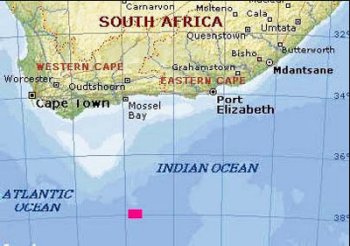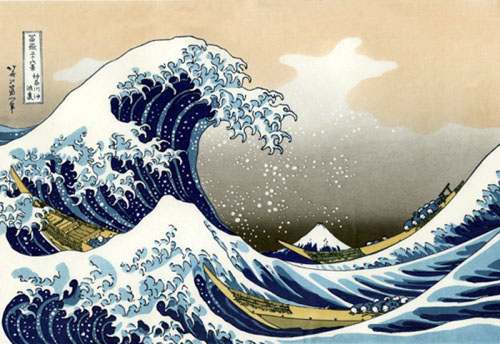Rogue Waves
Today, a tall tale turns into dangerous reality. The University of Houston's College of Engineering presents this series about the machines that make our civilization run, and the people whose ingenuity created them.
William Broad writes about huge isolated ocean waves in the New York Science Times. For centuries, those so-called rogue waves have been the stuff of sea legends -- waves a hundred feet high. Those who've spent much time at sea have seen some big waves, maybe as high as forty feet, but stories of waves that could tower over a large ocean liner -- well, isn't that what we mean by a tall tale?
But that's changing for two reasons: Many ships are now large enough to survive such waves and more eyewitnesses live to tell about them. And better instrumentation on both offshore drilling platforms and large ships yield actual measurements of huge waves.
As oceanographers sort stories brought back by tankers and cruise ships -- as they see the appalling damage done to those ships, it's clear that rogue waves do exist. The Queen Mary was carrying 15,000 troops when she survived one in the North Atlantic in 1942. Data now suggest that around ten such waves ride the oceans at any time. And it's obvious that a vast number of mysteriously vanished small ships were simply squashed by such waves.
Two kinds of waves travel the ocean. Most common are deep-water waves, whose length is much shorter than the ocean depth. A tsunami, on the other hand, is a shallow-water wave, because the ocean is shallow in comparison with its length. Before it reaches the shore, a tsunami wave might be a few feet high and hundreds of miles long. Deep and shallow don't refer to ocean depths, but to the wavelength relative to depth.
So how do these giant deep-water rogue waves form? They're clearly unrelated to tsunamis, or the earthquakes that form tsunamis. They're more likely to form when a high wind opposes an ocean current, increasing the wave speed relative to the water so the waves have to grow taller. Or wind-driven waves of different lengths might meet, combine, and amplify into one large wave.
Rogue waves are isolated, one-of-a-kind results of unusual circumstances. And they're short-lived -- they soon break up and disappear. How big can they get? We've never seen anything like the 200-foot theoretical limit; but Broad mentions a 112-foot wave recorded in 1933 when it hit a tanker in the Pacific. The crew had the remarkable self-possession to triangulate upon it.
As we sift survivor's stories and make new measurements, these waves become far more common. Radar satellites recently revealed ten waves, more than 80 feet high, over a three week peri od.
od.
And we bring the tools of theoretical fluid mechanics to bear upon the fiendishly hard problem of predicting and avoiding these sea monsters. Even though early warnings have been sounded in one particularly dangerous region off the coast of South Africa, this remains just a bit like anticipating tornados.
So the stuff of myth becomes transmuted into a real threat, lingering upon the deep. It could, as we say, happen to you.
I'm John Lienhard, at the University of Houston, where we're interested in the way inventive minds work.
W. J. Broad, Rogue Giants at Sea: Huge, Freakish, but Real, Waves Draw New Study. New York Science Times, Tuesday, July 11, 2006, pp. D1 and D4.
See the Wikipedia article on rogue waves.

The Great Wave, print by Katsushika Hokusai, 1760-1849. (There's no evidence that Hokusai was thinking of a tsunami -- although, if this were a deep-water rogue wave, it's unlikely that land would be in sight.)